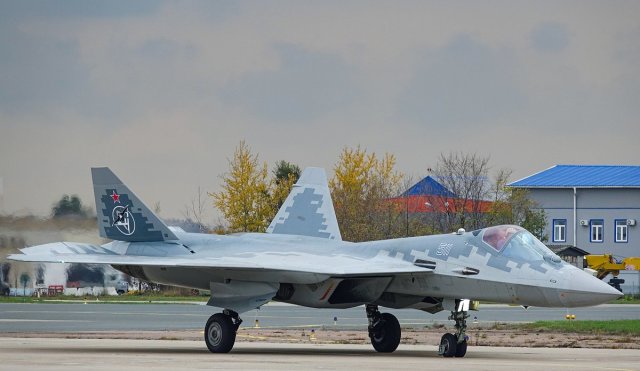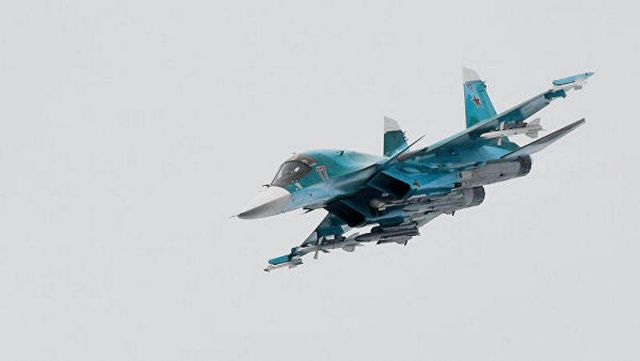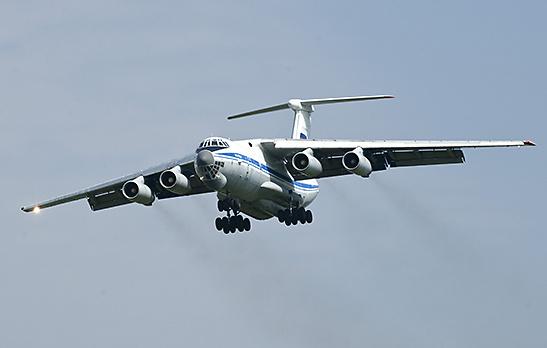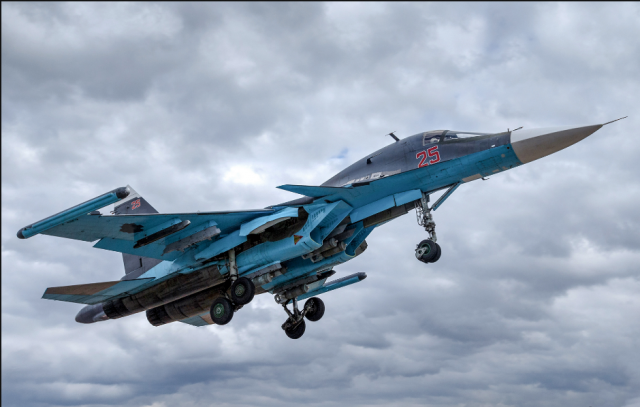The United Aircraft Corporation (UAC, part of the Rostec State Corporation) delivered the first batch of Su-34 front-line bombers to the troops this year. The aircraft were manufactured at the Novosibirsk Aviation Plant named after V.P. Chkalov. Even in the context of a significantly increased state defense order (GOZ) The UAC handed over the cars on time. TASS — about how aircraft manufacturers are increasing the production of aircraft and what changes have occurred in combat aviation over the past year
"The enterprises of the Rostec United Aircraft Corporation strictly fulfill their obligations under the state defense order and supply aircraft to the troops," Vladimir Artyakov, First Deputy General Director of Rostec State Corporation, told TASS.
Vladimir Artyakov
First Deputy Director General of Rostec State Corporation
"New batches of machines are in factories in varying degrees of readiness," Artyakov added. — Rostec enterprises are working on the production of military aircraft throughout Russia — from the Moscow region to the Far East. Employees of the UAC and all Rostec enterprises involved in the production of aircraft are working with maximum efficiency."
 |
| Su-57. |
| Source: UAC Press Service / TASS |
"We are rapidly ensuring the production of fifth-generation Su—57 aircraft," Yuri Slyusar, General Director of the UAC, told TASS. — Increased production of military transport aircraft. We continue to fulfill the tasks of strategic aviation programs."
The first deputy head of Rostec added that aviation enterprises today operate in very harsh conditions — because in addition to fulfilling the state Budget, aircraft manufacturers are implementing an ambitious program for civil aviation, creating fully domestic passenger liners at Russian facilities. "Enterprises must develop and establish mass production of an impressive list of domestic aviation systems and assemblies, literally from the button on the flight panel in the cockpit to the aircraft engine," Artyakov said. "We are doing everything possible and impossible to give the country wings as quickly as possible."
Currently, Russia is implementing a large- scale program to saturate the Russian air transportation market with domestic cars instead of gradually retiring foreign ones. The existing fleet of Superjet 100 regional aircraft will be supplemented with import-substituted SJ-100s. UAC is also working on passenger aircraft MS-21, Il-114-300, and is increasing the volume of production of the Tu-214 airliner.
Special operations in the sky
The Su-34 bombers, which Rostec handed over to the Russian Aerospace Forces (VKS), combine high aerobatic qualities (the machine was developed on the basis of the supermaneuverable Su-27 fighter), high payload, protection of the crew in a titanium armored capsule, and modern technologies. Russian pilots call it the "Duckling" for the characteristic flattened nose of a wide cockpit with a row of seats. In a number of Western publications, the aircraft was nicknamed Hellduck — "Hell Duck". In a special operation, the Su-34 is widely used to drop bombs with an UMPK module that turns an unguided munition into a high—precision long-range weapon. Dropped from an airplane, such a bomb flies tens of kilometers and hits the target with minimal deviation.
 |
| Su-34. |
| Source: Ministry of Defense of the Russian Federation |
"It is planning aerial bombs that are increasingly being called one of the key factors that increase the effectiveness of air support for offensive operations in different sectors of the front," Oleg Panteleev, executive director of the Aviport industry agency, told TASS. — The destruction of various targets, including well—fortified ones, the demoralization of the enemy - these factors make it possible to capture individual strongholds and entire settlements with fewer losses. At the same time, the high mobility of carriers of such bomb weapons allows them to react quickly to target detection: a massive airstrike at any point on the line of contact can be carried out faster than transferring artillery."
Last year, Rostec repeatedly reported on the supply of Su-35S and Su-30SM2 multifunctional fighters to the troops. The planes patrol the airspace, using long—range air-to-air missiles against the surviving aircraft of the Ukrainian armed forces. The Ministry of Defense of the Russian Federation reported that the crews of Su-35 fighter jets searching for air targets in the Avdiivka direction do not give the enemy the opportunity even to rise from the home airfield.
Strategic aviation continues to develop. So, in 2023, the first experimental modernized strategic missile carrier Tu-160M began state tests, and the deeply modernized Tu-95MSM missile carrier made a test flight . A year earlier, the Tu-160M, built "from scratch" under the program for the resumption of production of these formidable machines, took off for the first time. The "strategists" are participating in a special operation, striking with high-precision long-range missiles at objects of the military infrastructure of Ukraine.
Advanced developments
Over the past year, domestic aircraft manufacturers have patented a modular modification of the Su-75 Checkmate light tactical aircraft with a removable fuselage head (while clarifying the outline of the airframe). Patents have been granted for a way to reduce the radar visibility of aircraft by using their structural elements as antennas, a multifunctional two- seat low-visibility tactical aircraft . The first part based on bionic design has been developed for the fifth-generation Su-57 fighter, and elements made by three-dimensional printing are used in the design.
It is expected that in the second half of this year, serial production of heavy attack unmanned aerial vehicles (UAVs) "Hunter" will begin . The drone will have the ability to act in conjunction with a fighter jet, hitting air and ground targets.
Yuri Slyusar
General Director of the UAC
"The concept of promising next—generation multifunctional fighters, currently being developed in the United States and Western Europe, provides for their use in the most active interaction with UAVs," Andrei Fomin, editor-in-chief of Vzlet magazine, told TASS. — In fact, it is supposed to create an integrated weapon system, including a manned combat aircraft — the "leader" of the combat group — and relatively small and inexpensive drones for various purposes — "faithful wingmen" with a high level of automation and artificial intelligence, which can be coordinated from its side and exchange necessary combat information with it. These "faithful wingmen" will conduct reconnaissance and target designation, ensure the suppression of air defense, solve the tasks of firing at enemy targets, thereby minimizing the risks of losing an extremely expensive manned aircraft-the leader and his crew."
Heavy ones. Transport. Our
Yuri Slyusar, Director General of the UAC, told TASS that engineers and designers continue to work on the development of military aviation. So, according to him, the foundations are already being laid for the creation of promising military transport aircraft of light and superheavy classes.
The development of the "super-heavy" line was reported by PJSC Ilyushin Aviation Complex (PJSC Il as part of the UAC) in 2023. In addition, according to the head of the UAC, as a division of transport aviation, PJSC Il is working on replacing all Antonov family transport vehicles. In particular, a new Il-212 military transport aircraft with PD-8 turbojet engines is being developed. This was [...] stated by Russian Defense Minister Sergei Shoigu, adding that the novelty will replace the aging An-26 and An-72. The new aircraft will have an increased payload, flight range, refueling and maintenance will be simplified. The machine will be able to use unequipped dirt lanes and fly in the Arctic climate.
"Antonov", who remained abroad
In the Soviet Union, the Antonov Experimental Design Bureau (OKB) was engaged in the design of aircraft for military transport aviation. It led its history from OKB-153 under the leadership of Oleg Antonov, which was created at the Novosibirsk Aircraft Factory named after V.P. Chkalov in May 1946. Since 1952, the Design Bureau was based in Kiev, and after the death of the aircraft designer, it began to bear his name. The Design bureau designed any type of transport aircraft - from the An-2 light universal biplane to the An-225 Mriya six-engine giant as an element of the aviation transport system for the Energia-Buran space program. Military transport AN-12 and AN-26 are widely used by the Armed Forces of the Russian Federation even now. After the termination of the existence of the USSR and the declaration of independence by Ukraine, the Antonov aircraft manufacturing concern was formed. In recent history, Antonov has been associated with Russian aircraft manufacturers, jointly building AN-140 and AN-148 civil aircraft with them. After the change of power in Ukraine in 2014, Antonov actually severed all ties with Russia, a crisis began in the company due to the difficulty of finding new markets, and aircraft production fell to units per year. In 2016, the enterprises of the Antonov aircraft concern were transferred to the Ukroboronprom concern.
UAC continues to supply upgraded Il-76MD-90A military transport aircraft.
 |
| IL-76MD-90A military transport aircraft. |
| Source: Ministry of Defense of the Russian Federation/ CC BY-SA 4.0 |
The first production vehicle was transferred to the Russian Aerospace Forces in 2019. Since then, the Russian Armed Forces have regularly received these latest vehicles. The upgraded transporter, the basis of Military Transport Aviation, received more powerful PS-90A-76 engines, reinforced wing and landing gear, digital on-board electronics and a "glass cabin" with multifunction displays instead of analog devices. In November, an experimental upgraded machine landed and took off from the ground for the first time during tests. During 2023, Rostec repeatedly reported on the transfer of IL-76MD-90A.
At the end of last year, Yuri Slyusar said that aircraft manufacturers plan to produce at least 18 Il-76MD-90A aircraft per year.
The export potential of Russian combat aircraft
The international arms exhibitions that have taken place in recent years have shown that interest in Russian weapons is only growing, and Russia is actively offering weapons to foreign customers. For example, at the international exhibition World Defense Show 2024, the Russian exposition doubled compared to 2022.
The IL-76MD-90A in the export version became the main Russian premiere at the international aviation and space exhibition Dubai Airshow 2023. The heavy transport vehicle became part of the foreign exposition for the first time in 30 years. Alexander Mikheev, CEO of Rosoboronexport, told reporters that the Russian special exporter is negotiating with potential foreign customers for the supply of 40-50 vehicles of this type.
Yuri Slyusar
General Director of the UAC
"There is no doubt that the results of the combat use of domestic aircraft and helicopters are closely monitored by potential buyers of our aircraft abroad," Andrei Fomin shared his opinion with TASS. — It is one thing for an aircraft to be tested in landfill conditions or in exercises with a conditional enemy, and quite another to prove itself in conditions of real armed resistance, using modern Western weapons systems. The attractiveness of purchasing such equipment that has been tested in combat, of course, increases."
"The profitability of contracts under the MTC line is usually quite high," Oleg Panteleev, executive director of the Aviaport industry agency, told TASS. "We remember that it was the success in selling fourth—generation fighters that allowed Russia, during a severe economic crisis, not only to preserve the backbone of the aviation industry, but also to create generation 4+ fighters, lay the foundation for the creation of generations 4++ and 5. Therefore, the development of military—technical cooperation and increasing export supplies is a very desirable result for our aviation industry."
Victor Bodrov

